Odd Signs and Portents in a Troubled State
Two updates, two strange developments.
First, California’s troubled high-speed rail project is flopping around like a fish on a hook, but let’s get to that part in a few minutes and start with this:
I’ve written many times (here’s one example, and see also the long piece I wrote for County Highway) about the strange goings-on at Point Reyes National Seashore, where litigation from several environmental groups led to a settlement that will remove twelve of the fourteen historic cattle ranches from the point. The response of the National Park Service to the lawsuit — that is, the response of the agency being sued — was muted, let’s say, both in court and in public. After the twelve ranchers joined the lawsuit as “intervenor defendants,” the NPS appeared to become a bystander, watching as the environmentalists and the ranchers negotiated a settlement — through yet another party, the Nature Conservancy, which wasn’t a plaintiff but offered to put up money from wealthy Bay Area patrons to pay the ranchers to leave.
I know that’s a tangled description, but the action on the field was also muddled, as many players maneuvered through a set of confidential discussions that were brokered by a third party which wasn’t involved in the litigation. It was a strange spectacle from the start. Among the odd pieces was the total silence of California officials, who appeared to have nothing to say about a major change on a large piece of important coastal land in the state they govern.
The noticeably weak response to the lawsuit from the Biden administration, in the form of a quiescent NPS and Department of the Interior, led ranchers and their supporters to speculate that the federal government had either invited the lawsuit or welcomed it when it came. Remembering the Obama-era environmental tactic of using “sue and settle” litigation to accomplish policy goals, people around Point Reyes wondered if the NPS and its administrative superiors were using a friendly lawsuit to “force” them to do something that they already wanted to do. You may remember the FOIA request I sent to NPS that produced a batch of email messages in which federal officials celebrated the settlement and the removal of the ranchers, greeting an apparent defeat with effusive enthusiasm.
There’s still no proof of collusion between the environmental groups and the Biden administration, showing conclusively that NPS invited or welcomed the lawsuit, or that the state government had a role behind the scenes, but last week brought quite an interesting development that seems to support both the theories. I found out about this one via the rancher Stephanie Moreda-Arend at Dairy Girl Diaries:
The California Wildlife Conservation Board voted on August 28 to allocate $2,706,872 in state government funds to the Nature Conservancy — to the neutral party that entered the negotiations to help produce the settlement that removed the ranchers — for the purpose of managing the post-ranching transition at Point Reyes. Details start on pg. 59 of this board agenda.
The National Park Service has also agreed to lease vacated ranch properties to the Nature Conservancy for up to forty years:
…while the Department of the Interior has committed to providing a further $1,000,000 in grant funding to the Nature Conservancy to carry out the rewilding of Point Reyes, a decision that happened early this year but apparently wasn’t announced at the time:
So the State of California wasn’t involved in the effort to remove the ranchers, and the Nature Conservancy was just a neutral party that helped to get the lawsuit settled, but now the State of California is paying millions of dollars to the Nature Conservancy for work at Point Reyes, while the federal government pitches in another million dollars to the same NGO to manage a series of changes on a big piece of federal land. The Nature Conservancy is going to pay rent to the federal government for ranch facilities at Point Reyes, while the federal government gives the Nature Conservancy a million dollars to fund its operations at Point Reyes.
You can kind of begin to get the picture that there was a plan in place.
The California Wildlife Conservation Board posts video of its meetings on YouTube, but as I wrote this, footage of the August 28 meeting hasn’t been posted yet. I suspect I’ll have more to say about all of this once I can watch that discussion. I have messages in to people who are involved in litigation over ranching at Point Reyes, and I’ll see if there’s anything they can tell me about the Nature Conservancy grants. The National Park Service has steadfastly refused to answer any of my questions about Point Reyes, ever, a position they’ve maintained since the first time I tried to speak to NPS officials. The Nature Conservancy has ignored a long series of email messages.
Turning to the second development, California’s high-speed rail project, which was approved in 2008 and began active construction in 2015, has no track anywhere, and so far mostly has mostly built isolated structures that are a long way from being connected into an integrated and functional system.
After being initially sold as a plan to connect Los Angeles and San Francisco by bullet train, the v e r y s l o o o o w project — you can see what I did there — pivoted to a “Phase One” in which high-speed rail would eventually just connect the Central Valley cities of Bakersfield and Merced. With the Trump administration trying to pull federal funding from the project, against an inevitable lawsuit from the state to force the federal funding to continue, the agency that runs the high-speed rail project is trying to recalibrate. In a series of potential changes approved by the HSR agency board of directors last week, state managers are now offering a series of what-if proposals to change the route of the train.
You can read the late-August “Supplemental Project Update Report” here, and watch video of the board meeting here.
Old idea:
Hot new idea:
If you live in California or know it well, you’re already laughing out loud. They want to connect San Francisco to Los Angeles by connecting Palmdale to Gilroy.
This is…how can I….Okay, hold on a minute.
Palmdale is in Los Angeles County, but it’s not in Los Angeles Los Angeles, and it’s on the other side of the quite large San Gabriel Mountains from Los Angeles, so it’s not really close to Los Angeles, if you’re connecting those two places by rail. But there’s a regional rail line, Metrolink, that runs around the mountains from Downtown Los Angeles to Palmdale, so you can ride a train from one to the other in…just a few hours:
Then, if they can fill in the last 96 miles between Palmdale and Bakersfield with rail infrastructure in just a couple more decades or so, you could ride a really fast bullet train from Bakersfield to Gilroy, an agricultural community about 40 miles south of the farthest southern end of anything that counts as the Bay Area, and then you could transfer to the regional Caltrain service that connects to San Jose, so you could get from Los Angeles to the Bay Area-ish by just spending eight to ten hours riding on three different trains, which is very sexy and modern and aren’t you dying to do that?
Here, let me make the screenshot a little wider, and now look at the right side of the same page:
That AMAZING three-train, eight-hour-plus rail service between cities that are less than 400 miles apart would have…oh…about…eighteen million riders a year? But, you know, maybe twelve and a half million at the low end.
And this whole exciting plan might maybe kind of possibly happen really soon:
It’s about money, by the way. Here’s how an Aug. 30 news story explains the proposed route changes:
We need to add a destination that will bring in a lot of revenue, was the argument.
So: Californians, hang in there! However much the state seems to be in decline, if you just wait another thirteen years, you may be able to ride a really fast train between Palmdale and Gilroy. Newsom 2028, obviously, so the whole country can be governed this well.

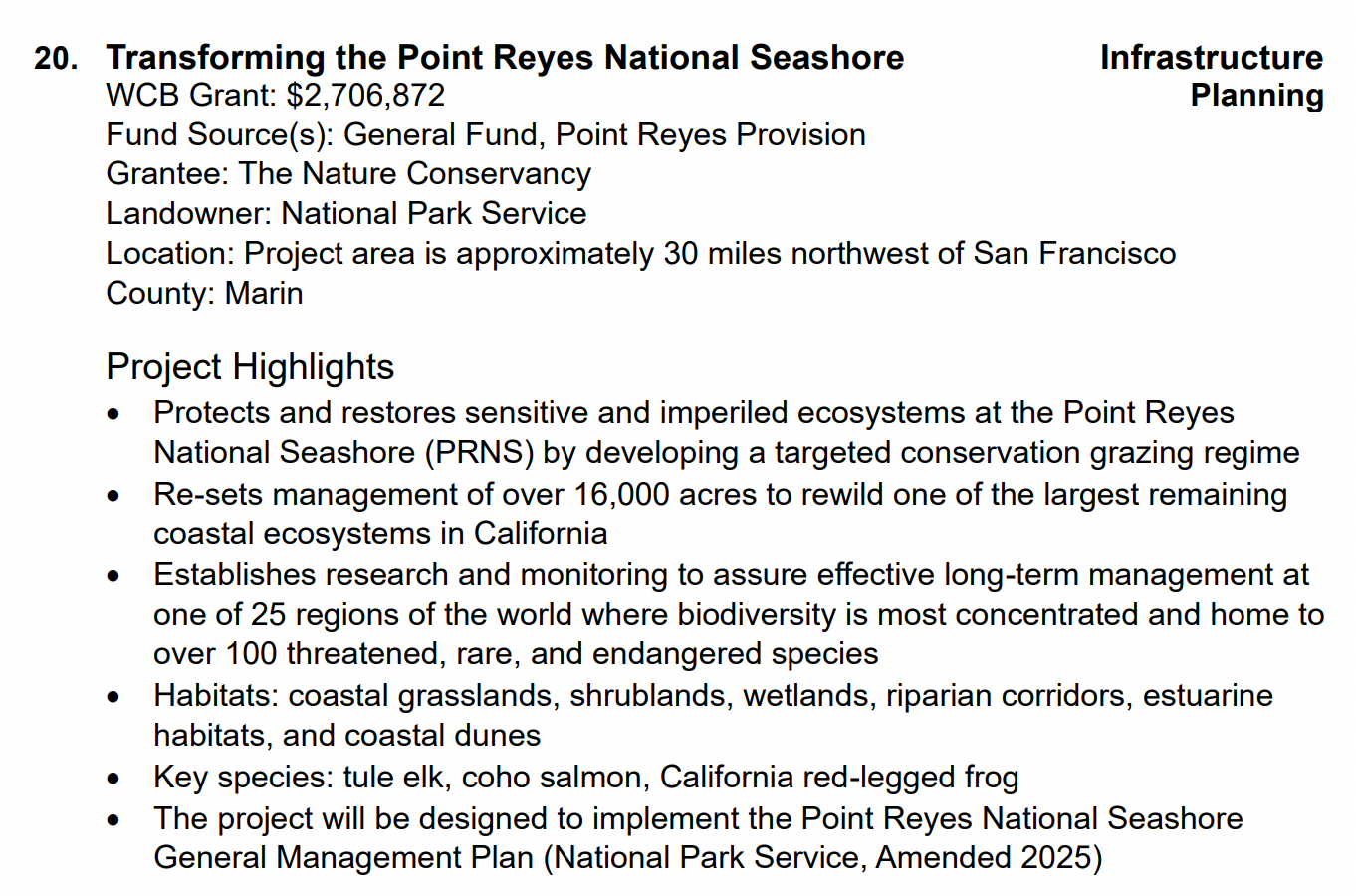
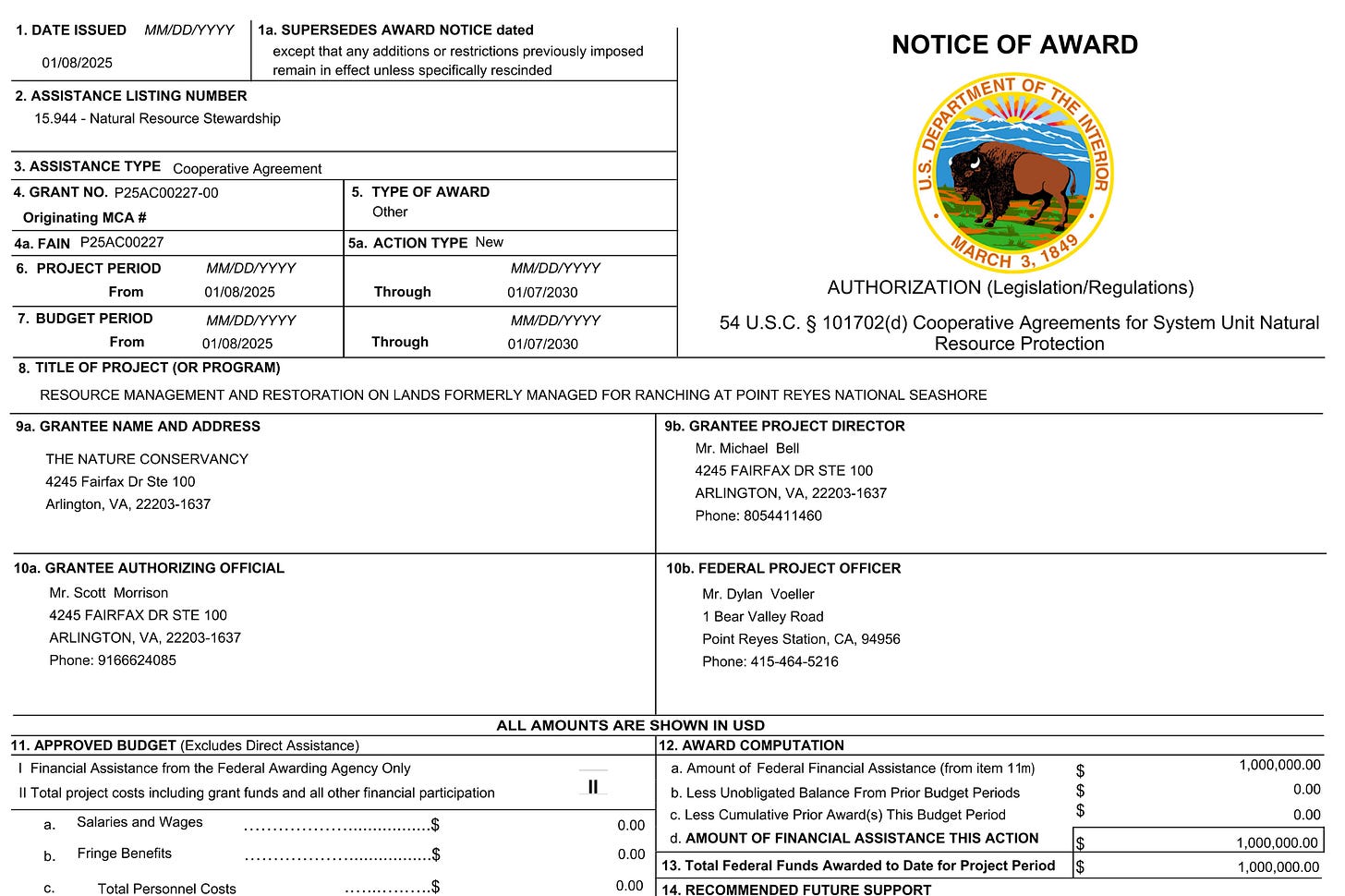
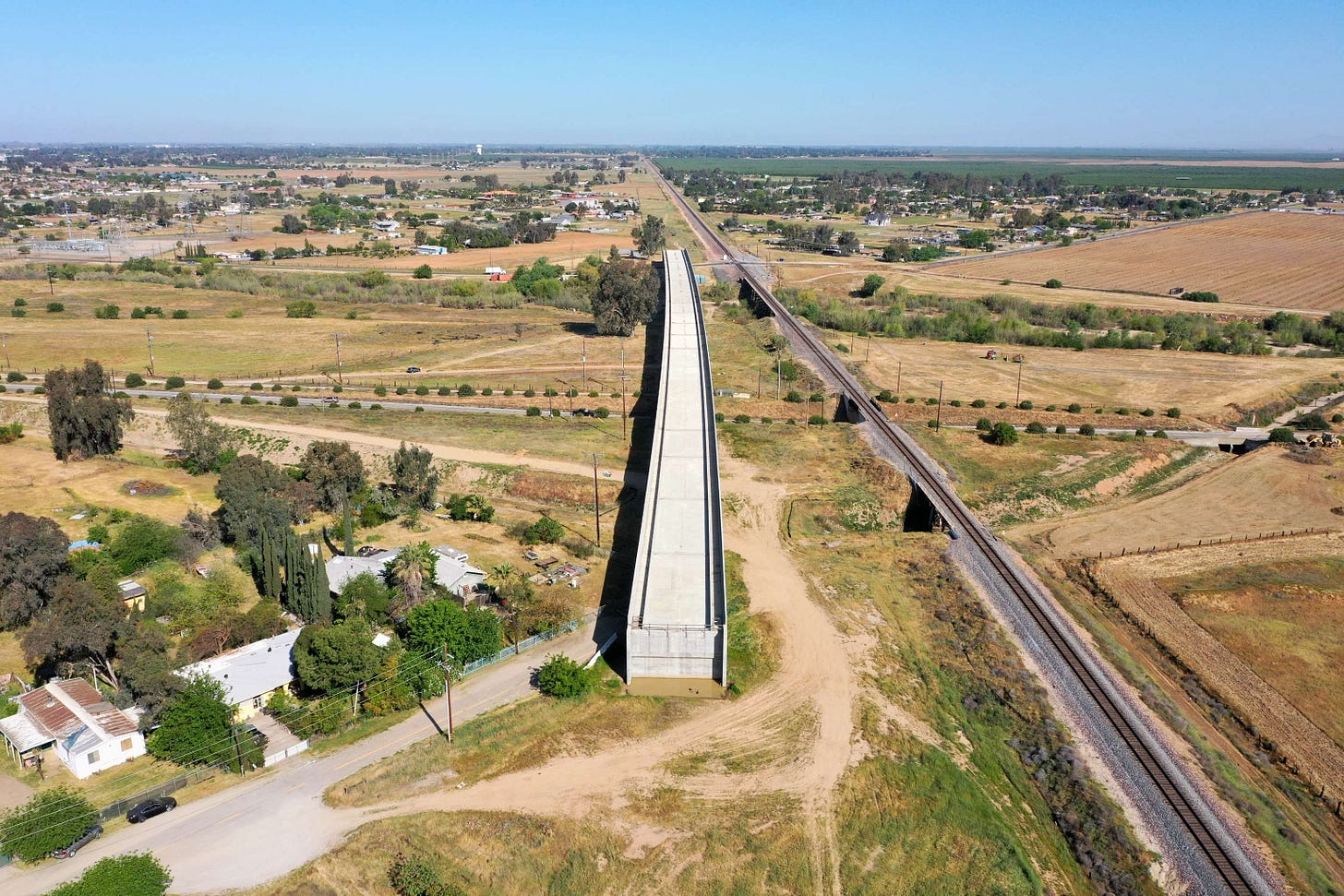
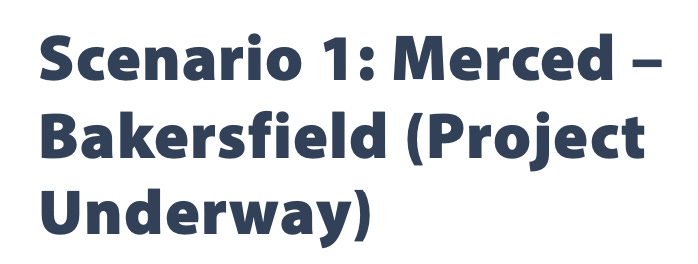

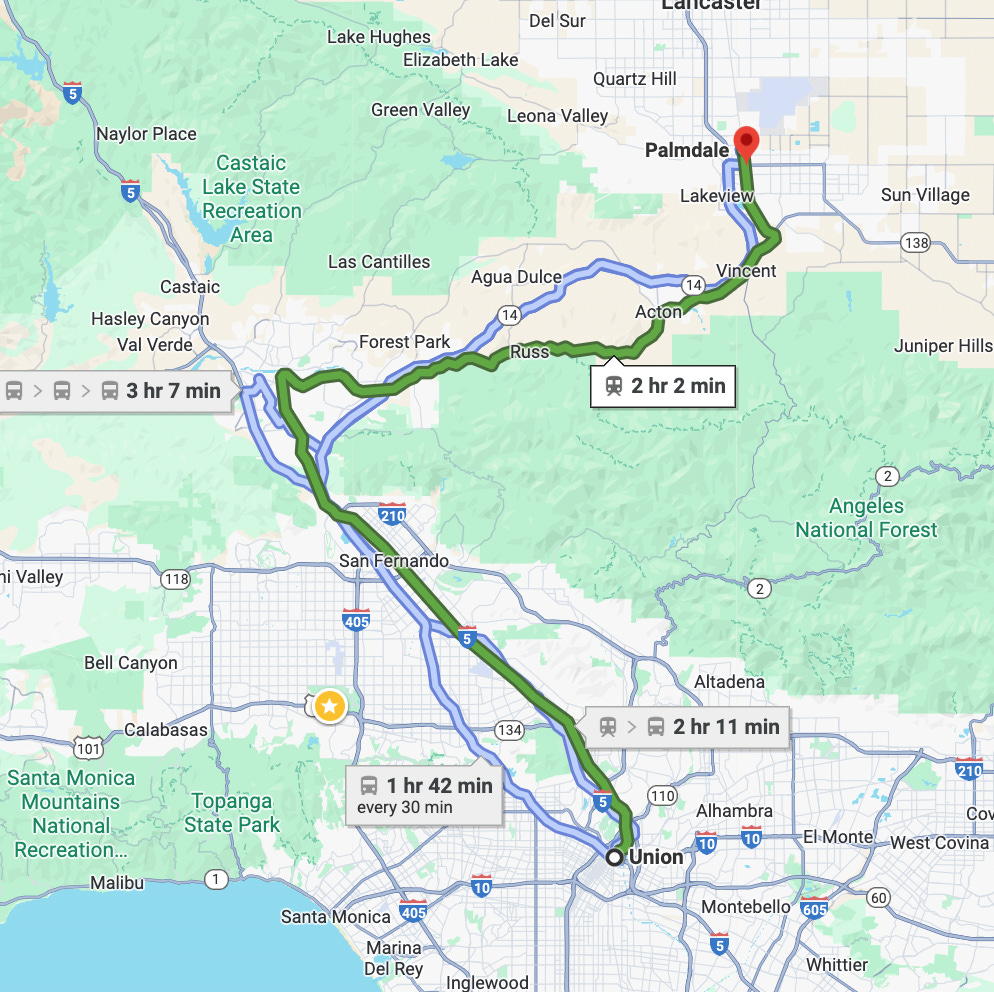
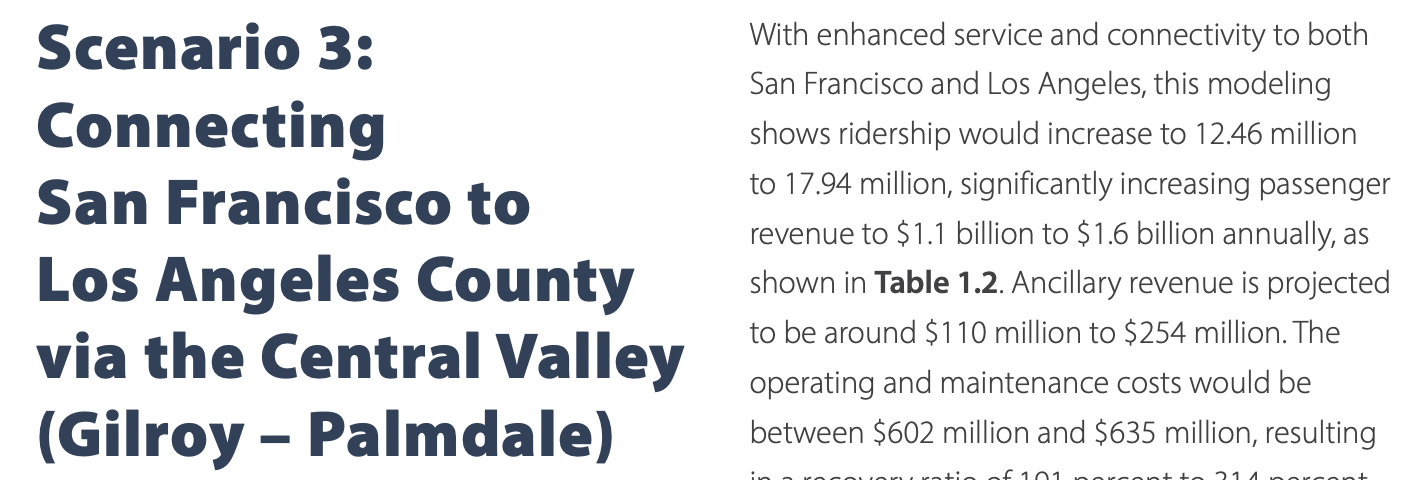
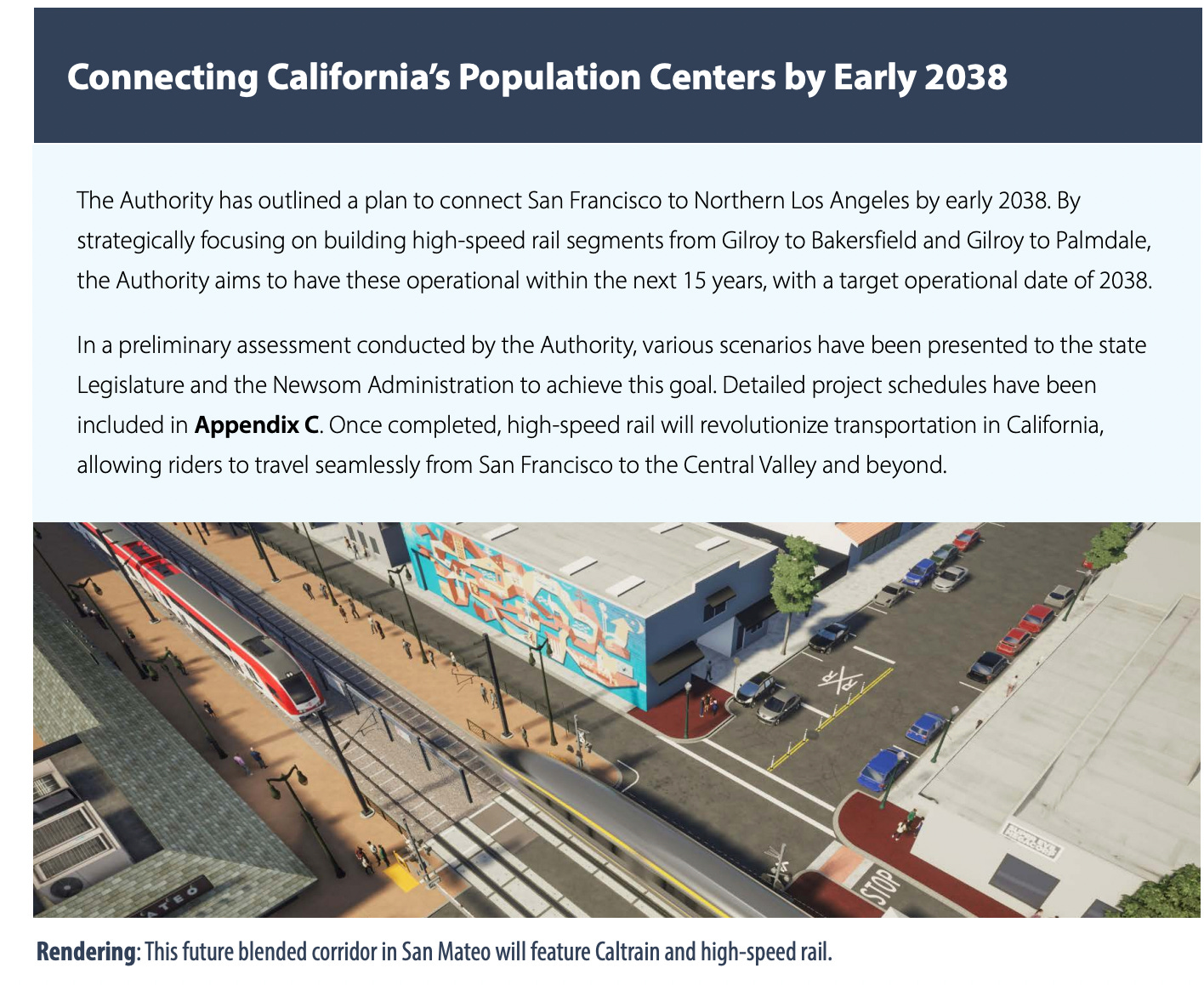

Will be offline on Tuesday morning, so comment among yourselves for a while. Back soon.
I hadn't realized the government was funding ngos until doge reported on it. Just like in first amendment cases where the government is not allowed to pay/coerce a third party to censor you, it's not okay for the government to fund ngos.